Abstract
This project provides educational support for students enrolled in a family practice clerkship by supplying PDA-based clinical references and tools to collect information about the patients they see and the seminars they attend. Each student is supplied with a Handspring Visor Deluxe to use during the clerkship. Supplied software includes a clinical reference (Five Minute Clinical Consult) and Lexidrugs drug reference and a medical calculator. The data collection software consists of a patient log for recording simple demographic and diagnostic information about each patient seen during the clerkship, a seminar evaluation module for recording student feedback about each didactic presentation during the course, and an evaluation form where they students supply their reactions to the use of the Visor. Despite encountering a number of problems, the devices appear to be beneficial tools. The applications provide useful references for students who do not have access to the resources of the University in their family medicine clerkship. They also provide an improved, though not perfect, means to capture data regarding patient encounters and course evaluations. However, the challenge remains to better integrate the PDA with the student s workflow in the clinic.
Full text
PDF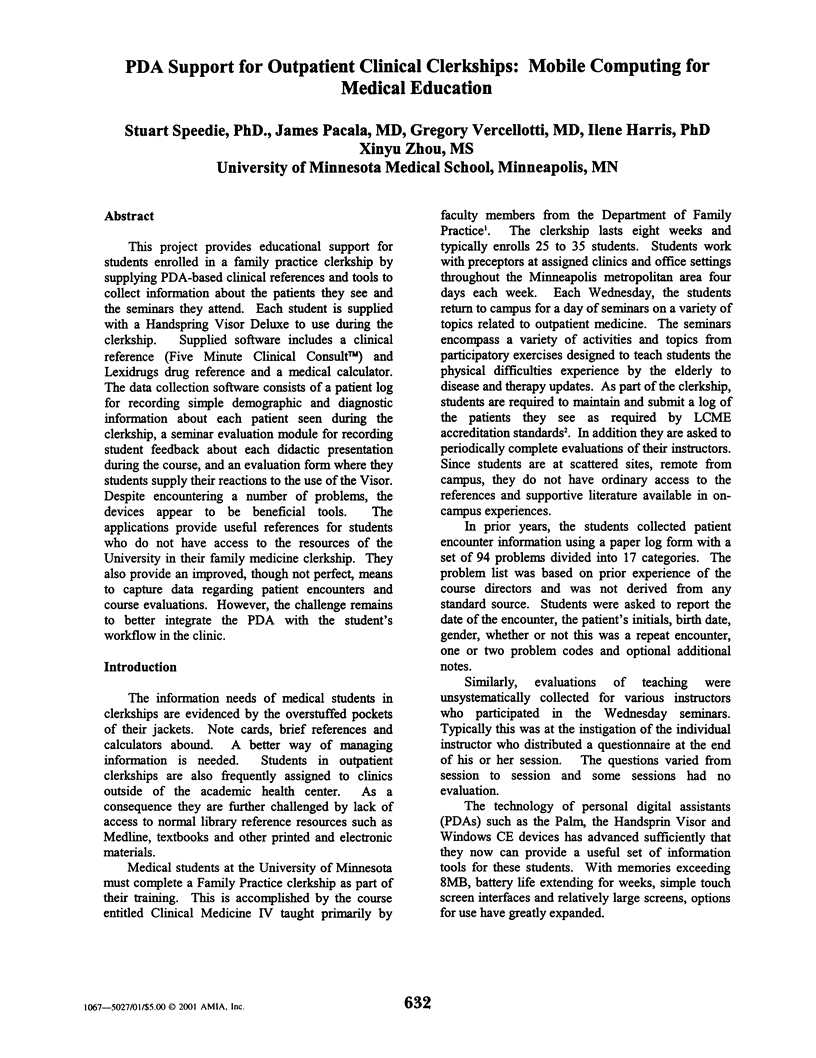
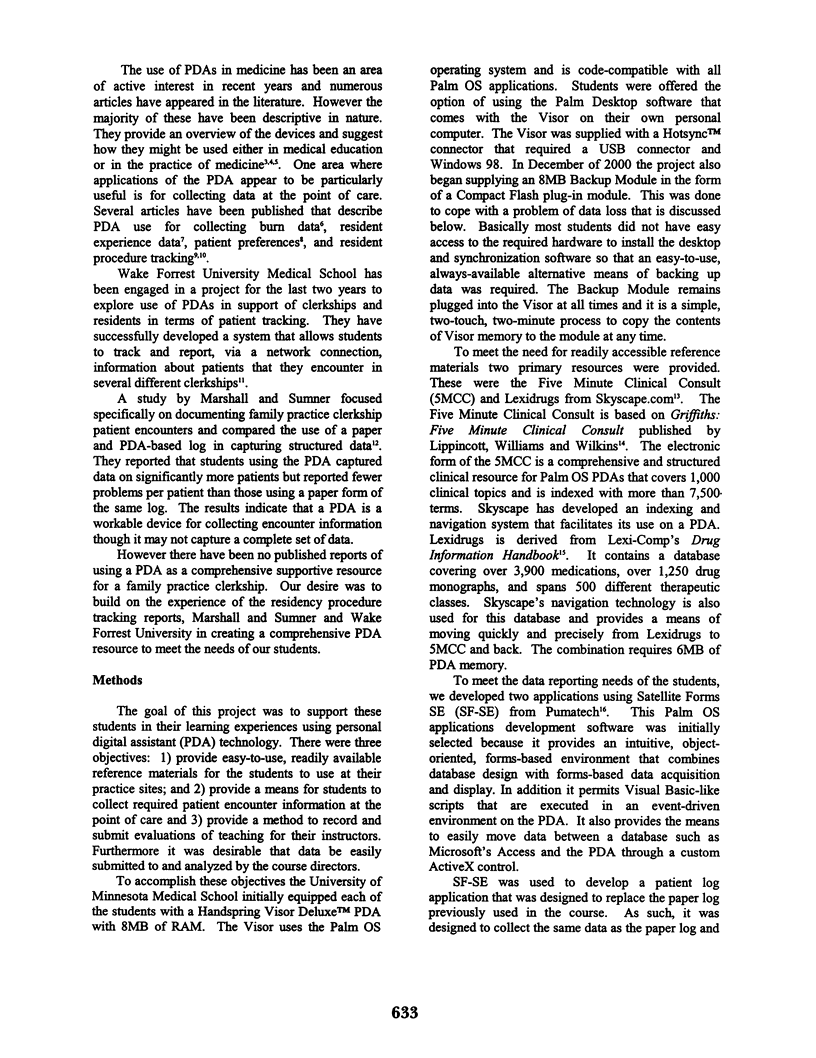
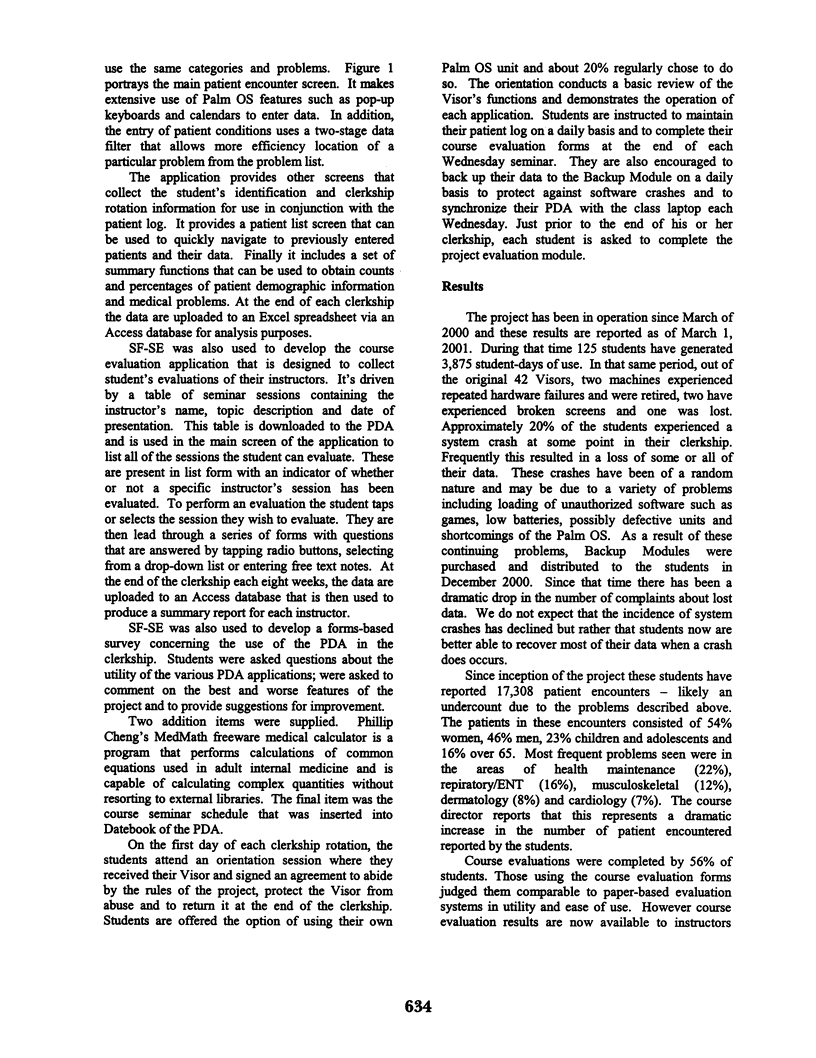
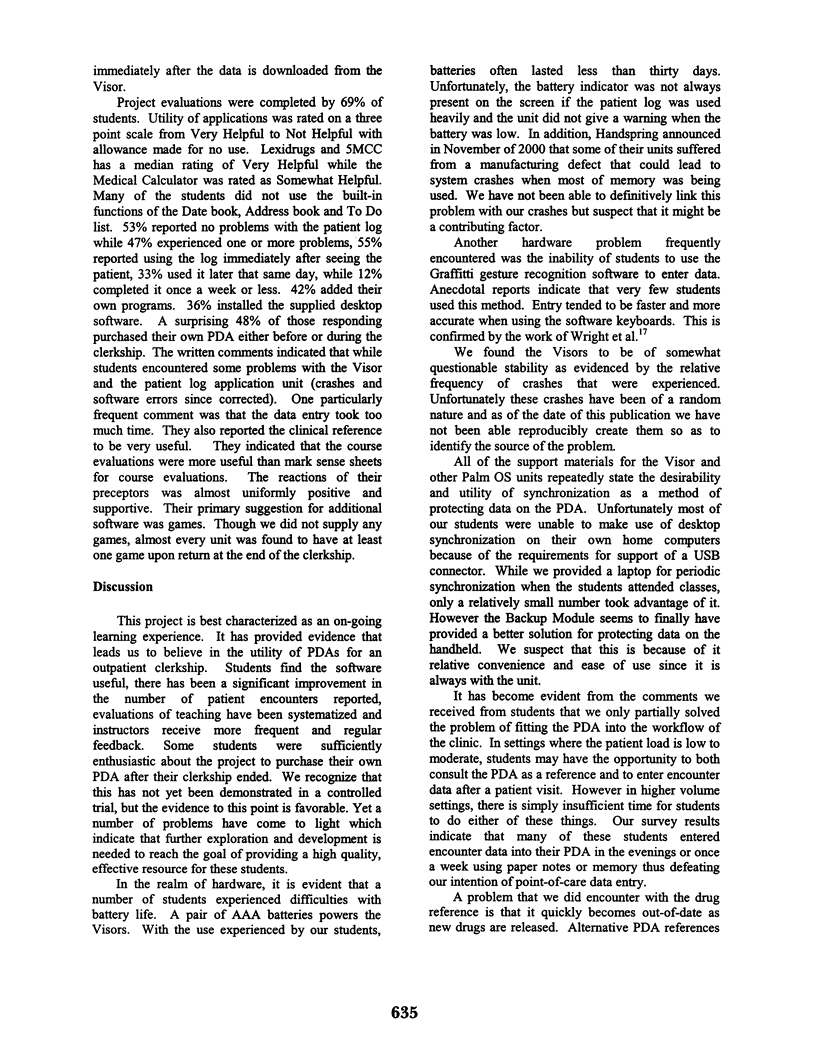
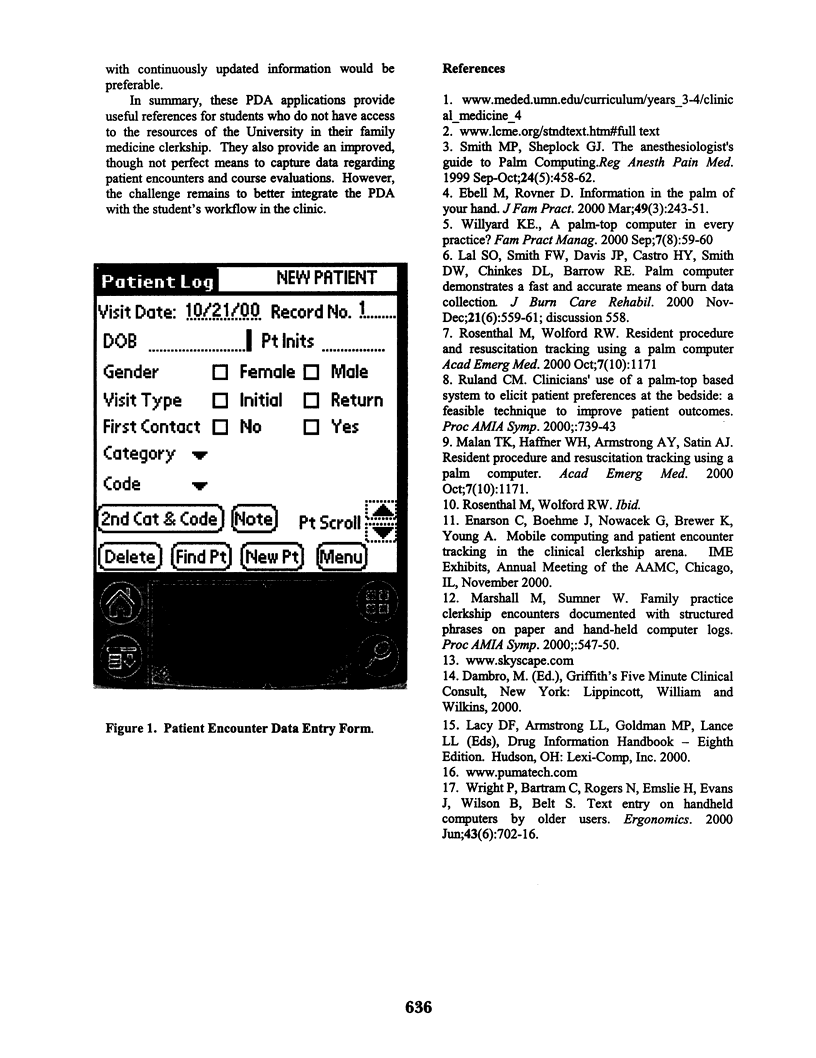
Selected References
These references are in PubMed. This may not be the complete list of references from this article.
- Ebell M., Rovner D. Information in the palm of your hand. J Fam Pract. 2000 Mar;49(3):243–251. [PubMed] [Google Scholar]
- Haffner S. M., Mykkänen L., Stern M. P., Paidi M., Howard B. V. Greater effect of diabetes on LDL size in women than in men. Diabetes Care. 1994 Oct;17(10):1164–1171. doi: 10.2337/diacare.17.10.1164. [DOI] [PubMed] [Google Scholar]
- Lal S. O., Smith F. W., Davis J. P., Castro H. Y., Smith D. W., Chinkes D. L., Barrow R. E. Palm computer demonstrates a fast and accurate means of burn data collection. J Burn Care Rehabil. 2000 Nov-Dec;21(6):559–558. doi: 10.1097/00004630-200021060-00015. [DOI] [PubMed] [Google Scholar]
- Marshall M., Sumner W., 2nd Family practice clerkship encounters documented with structured phrases on paper and hand-held computer logs. Proc AMIA Symp. 2000:547–550. [PMC free article] [PubMed] [Google Scholar]
- Rosenthal M, Wolford RW. Resident procedure and resuscitation tracking using a palm computer. Acad Emerg Med. 2000 Oct;7(10):1171–1171. [PubMed] [Google Scholar]
- Ruland C. M. Clinicians' use of a palm-top based system to elicit patient preferences at the bedside: a feasible technique to improve patient outcomes. Proc AMIA Symp. 2000:739–743. [PMC free article] [PubMed] [Google Scholar]
- Smith M. P., Sheplock G. J. The anesthesiologist's guide to Palm Computing. Reg Anesth Pain Med. 1999 Sep-Oct;24(5):458–462. doi: 10.1016/s1098-7339(99)90014-7. [DOI] [PubMed] [Google Scholar]
- Willyard K. E. A palm-top computer in every practice? Fam Pract Manag. 2000 Sep;7(8):59–60. [PubMed] [Google Scholar]
- Wright P., Bartram C., Rogers N., Emslie H., Evans J., Wilson B., Belt S. Text entry on handheld computers by older users. Ergonomics. 2000 Jun;43(6):702–716. doi: 10.1080/001401300404689. [DOI] [PubMed] [Google Scholar]


